Difference between Lord Shankar and Lord Shiva
The nuanced realms of Hindu spirituality as we unravel the subtle distinctions between Lord Shankar and Lord Shiva Explore the divine dichotomy
The nuanced realms of Hindu spirituality as we unravel the subtle distinctions between Lord Shankar and Lord Shiva Explore the divine dichotomy

Hinduism, with its vast pantheon of deities, encompasses a multitude of divine forms, each representing various aspects of the ultimate reality. Two commonly used names, Lord Shankar and Lord Shiva, often lead to confusion among followers. In this article, we delve into the difference between Lord Shankar and Lord Shiva, shedding light on their distinct roles and significance in Hindu mythology.
Understanding Lord Shiva: Lord Shiva is one of the principal deities in Hinduism, revered as the supreme being who holds a central position in the Holy Trinity, known as the Trimurti. The Trimurti consists of Lord Brahma, the creator; Lord Vishnu, the preserver; and Lord Shiva, the destroyer. Lord Shiva is often depicted as the auspicious and benevolent form of divinity.
Attributes of Lord Shiva:
Nataraja - The Cosmic Dancer: Lord Shiva is often celebrated as Nataraja, the cosmic dancer whose rhythmic movements symbolize the cosmic cycles of creation, preservation, and destruction.
Adorned with Snakes: He is depicted wearing serpents as ornaments, symbolizing his control over fear and death.
Third Eye: Lord Shiva is commonly portrayed with a third eye, signifying his perception beyond ordinary sight and his ability to incinerate evil with a single glance.
Trident (Trishul): The trident in Lord Shiva's hand represents the three fundamental qualities of nature - Sattva (goodness), Rajas (passion), and Tamas (ignorance).
Understanding Lord Shankar: While Lord Shiva is the all-encompassing deity embodying cosmic balance, Lord Shankar represents a more localized and human-friendly aspect of the divine. The term "Shankar" is often used to refer to a compassionate, benevolent form of Lord Shiva, emphasizing his role as the one who brings auspiciousness and grace.
Attributes of Lord Shankar:
Benevolent and Approachable: Lord Shankar is often perceived as a merciful and approachable deity, receptive to the prayers and devotion of his devotees.
Granting Boons: Devotees often worship Lord Shankar to seek blessings and boons, believing in his benevolence and willingness to fulfill their sincere prayers.
Symbol of Auspiciousness: Lord Shankar is considered the bestower of happiness and prosperity, and his worship is believed to bring auspiciousness to one's life.
It's important to note that Lord Shiva and Lord Shankar are not separate entities but rather different aspects of the same divine being. Lord Shankar represents a more personal, compassionate, and approachable form of Lord Shiva, making the divine accessible to devotees in their daily lives.
In the vast tapestry of Hindu mythology, the distinctions between Lord Shiva and Lord Shankar offer a nuanced understanding of the divine. While Lord Shiva embodies the cosmic and transcendent aspects, Lord Shankar brings forth the compassionate and benevolent nature of the supreme deity. Together, they encapsulate the multifaceted divine essence that resonates within the hearts of millions of devotees.
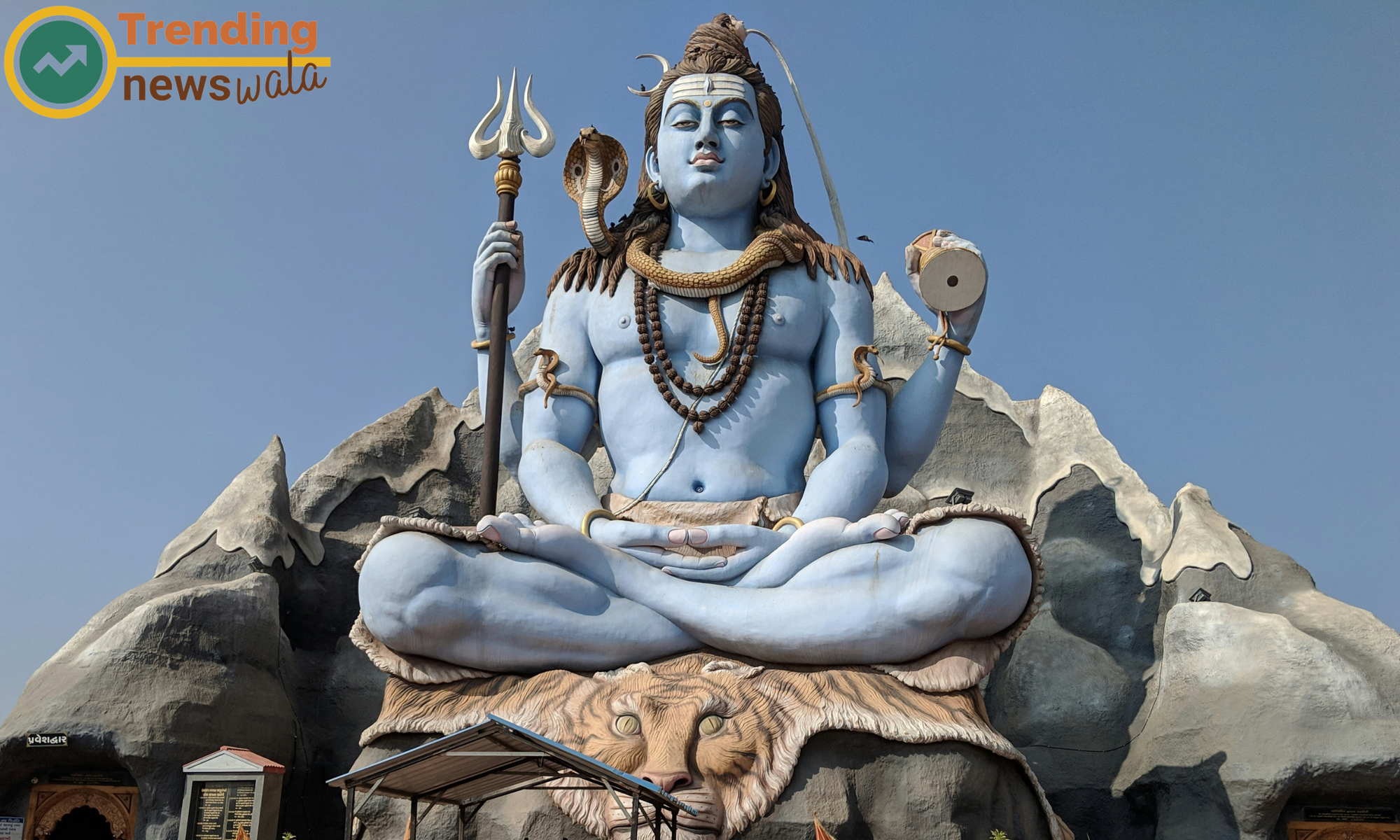
Attributes of Lord Shiva
Lord Shiva, one of the principal deities in Hinduism, is a complex and multifaceted figure. Often referred to as the "Destroyer" within the Holy Trinity (Trimurti), Lord Shiva holds a pivotal role in the cosmic order. His attributes are rich in symbolism, reflecting various aspects of divinity, creation, preservation, and destruction. Here are some key attributes of Lord Shiva:
The Crescent Moon (Chandra on His Head): Lord Shiva is often depicted with a crescent moon adorning his matted locks. The crescent moon symbolizes the passage of time, the rhythmic cycle of creation and destruction, and the control of time by the divine.
Ashes (Bhasma): Lord Shiva is smeared with ash (bhasma) on his body, symbolizing the transient nature of life and the eventual dissolution of the physical form. It also signifies renunciation and the detachment from material possessions.
Ganga (The Holy River): The Ganga (River Ganges) is intricately associated with Lord Shiva. In some depictions, Ganga is shown flowing through his matted hair, representing the divine intertwining of the sacred river with the divine consciousness. This imagery also symbolizes purification and the auspiciousness of the Ganges.
The Drum (Damru): Lord Shiva is depicted holding a small drum known as the damru. The rhythmic beats of the drum symbolize the primal sound (Nada) that initiated the creation of the universe. It is also associated with the heartbeat of the cosmos.
The Trident (Trishul): Lord Shiva's trident, known as the Trishul, symbolizes the three fundamental aspects of existence: creation, preservation, and destruction. It represents Lord Shiva's control over the three gunas (qualities) - Sattva, Rajas, and Tamas.
Tiger Skin (Vibhuti): Lord Shiva is often depicted seated on a tiger skin, symbolizing his mastery over primal instincts and the taming of the animalistic nature within. The tiger skin also represents the triumph of divine consciousness over brute strength.
Blue Throat (Neelkanth): Lord Shiva is known as Neelkanth, the one with the blue throat. This epithet is derived from the incident where Shiva consumed the poison (halahala) during the churning of the ocean (Samudra Manthan). His throat turned blue, signifying his selfless act for the welfare of the universe.
Ardhanarishvara (Half-Male, Half-Female): In the Ardhanarishvara form, Lord Shiva is depicted as half-male and half-female, symbolizing the unity of opposites, the harmonious balance of masculine and feminine energies, and the interdependence of creation and destruction.
These attributes collectively contribute to the rich symbolism and profound philosophical teachings associated with Lord Shiva, making him a revered and worshipped deity in Hinduism. Each aspect serves as a metaphorical representation of divine principles and cosmic order.
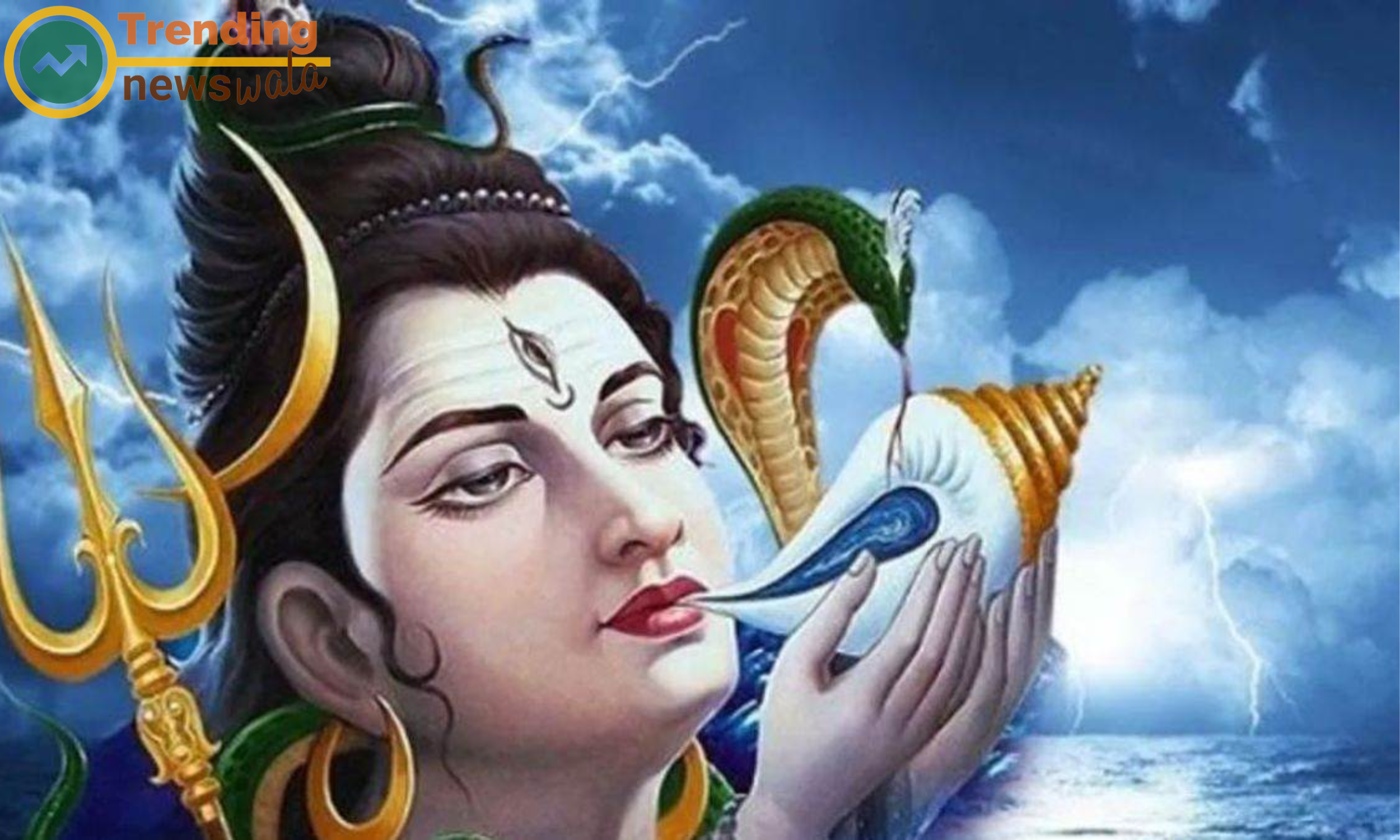
The Crescent Moon
The crescent moon, commonly associated with Lord Shiva, is a significant and symbolic element in Hindu mythology. It is one of the distinctive attributes adorning Lord Shiva's head, particularly within his matted locks. The presence of the crescent moon carries profound meaning and symbolism, contributing to the multifaceted representation of Lord Shiva.
Here are more details about the symbolism and significance of the crescent moon in the context of Lord Shiva:
Time and Cycles:
Control Over Time: Lord Shiva, as the deity associated with destruction and transformation, is often depicted as having control over time. The presence of the crescent moon signifies his mastery over the cosmic order, including the flow of time.
Connection to Lunar Calendar: The lunar calendar is an integral part of Hindu tradition, and the crescent moon is a symbol of the lunar phases. Lord Shiva's association with the moon aligns with the significance of lunar cycles in Hindu rituals, festivals, and auspicious occasions.
Nurturing Divine Qualities: The crescent moon on Lord Shiva's head is believed to represent the divine qualities of calmness, tranquility, and serenity. It symbolizes the peaceful and benevolent aspect of Lord Shiva, offering solace and comfort to his devotees.
Auspiciousness and Beauty: The crescent moon is considered an auspicious and beautiful adornment, enhancing the divine aesthetics of Lord Shiva. It adds to the overall divine charm and grace associated with the deity.
Stories and Legends: In certain Hindu myths, the crescent moon is associated with the story of Lord Shiva consuming the poison (halahala) during the churning of the ocean (Samudra Manthan). The moon is said to have been created from the poison and was placed on Shiva's head as a protective ornament.
Symbol of Coolness: The moon is often associated with coolness and calm. Lord Shiva, with the crescent moon, is seen as the embodiment of tranquility, especially in contrast to the fierce and fiery aspects of his cosmic role.
Devotion and Worship: Devotees of Lord Shiva often consider the crescent moon as a symbol of their devotion. The sight of the crescent moon is believed to bring blessings and positive energy, and it is a common motif in Shiva temples and worship.
In summary, the crescent moon on Lord Shiva's head holds profound symbolic significance, representing time, cycles, divine qualities, and the auspicious aspects of the lunar calendar. It contributes to the intricate iconography of Lord Shiva, providing devotees with a visual representation of the deity's multifaceted nature.
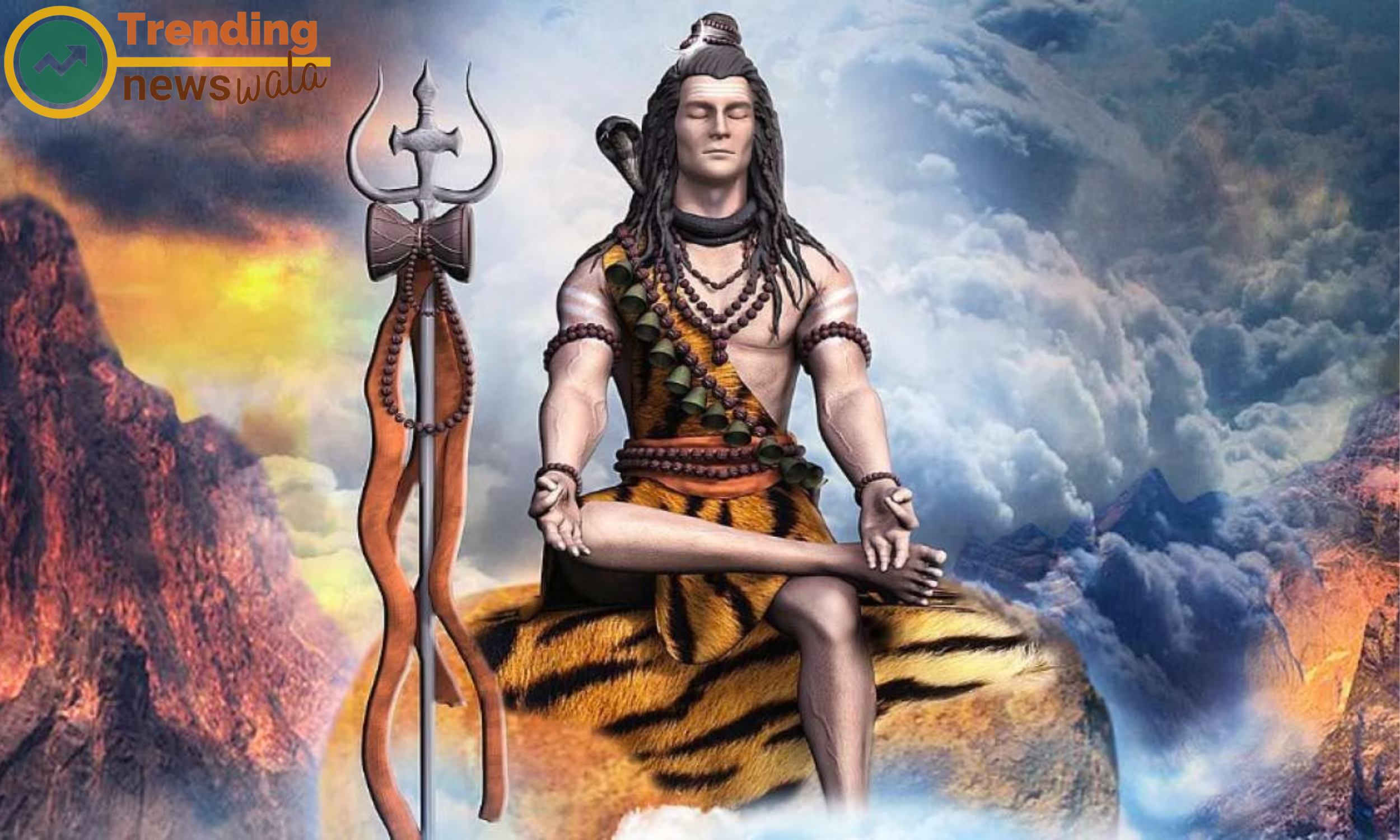
Ashes (Bhasma)
The use of ashes, known as Bhasma or Vibhuti, is a distinctive and symbolic aspect of the iconography of Lord Shiva in Hinduism. The application of ashes on Lord Shiva's body holds deep spiritual and philosophical significance, representing the transient nature of life, the inevitability of death, and the ultimate reality of cosmic dissolution.
Here are more details about the symbolism and significance of ashes (Bhasma) in the context of Lord Shiva:
Transience and Impermanence:
Renunciation and Detachment: The application of ashes on Why lord shiva is known as Mahadev Lord Shiva's body signifies renunciation and detachment from worldly attachments. It reflects the renunciant nature of Shiva, who is beyond the allurements of material possessions and desires.
Cremation Ground Symbolism:
Trikaala Darshana - Past, Present, and Future: The application of three horizontal lines of Bhasma on the forehead, known as Trikaala Darshana, represents the three aspects of time: past, present, and future. It signifies Lord Shiva's omnipresence and his transcendence beyond the limitations of time.
Purity and Purification: In Hindu rituals, Bhasma is considered purifying and is used by devotees as a sacrament. The ashes, when applied devoutly, are believed to purify the body, mind, and soul, preparing the devotee for spiritual practices and worship.
Connection to Shaivism: Followers of Shaivism, a major sect within Hinduism dedicated to Lord Shiva, often apply Bhasma as a symbol of their allegiance and devotion. The use of ashes becomes a sacred ritual that connects the devotee to the divine energy represented by Lord Shiva.
Aesthetics and Iconography: The application of ashes enhances the aesthetic and iconic representation of Lord Shiva. The contrasting image of a divinely adorned deity with ashes on the body reinforces the paradoxical nature of Shiva, embodying both austere asceticism and divine beauty.
Moksha (Liberation) Symbolism: Bhasma is associated with the idea of Moksha or liberation. The wearing of ashes signifies the soul's journey toward liberation from the cycle of birth and death, emphasizing the ultimate goal of spiritual awakening and self-realization.
In summary, the use of ashes (Bhasma) on Lord Shiva is a profound and intricate aspect of Hindu symbolism. It conveys deep philosophical concepts, emphasizing the impermanence of life, the renunciant nature of the divine, and the transformative power of spiritual practices. The application of Bhasma serves as a visual and symbolic representation of the profound teachings embedded in the worship of Lord Shiva.
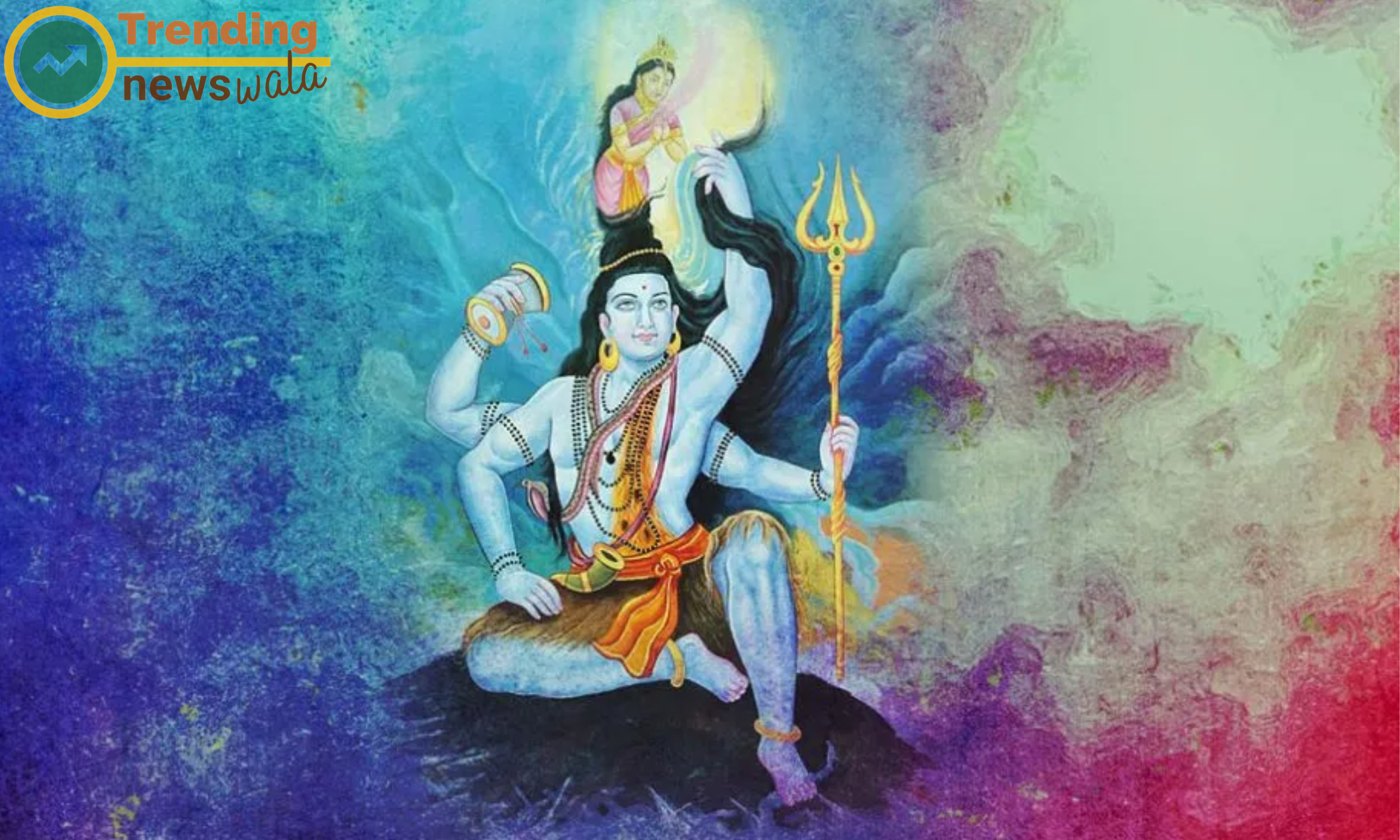
Ashes (Bhasma)
The Ganga, or Ganges, is one of the holiest and most revered rivers in Hinduism, and its association with Lord Shiva adds a layer of sacred significance to its waters. The Ganga holds profound religious, cultural, and ecological importance, making it a central element in Hindu mythology and worship, particularly in connection with Lord Shiva.
Here are more details about the symbolism and significance of the Ganga in the context of Lord Shiva:
Origin and Purity: According to Hindu mythology, the Ganga is believed to originate from the matted locks of Lord Shiva. This sacred origin signifies the purity and divine nature of the river. The Ganga is often referred to as "Ganga Maa" or Mother Ganga, highlighting its nurturing and purifying qualities.
Cleansing and Purification: The waters of the Ganga are considered purifying and spiritually cleansing. Bathing in the Ganga is believed to wash away sins and impurities, leading to spiritual upliftment. The river is a symbol of spiritual purification and renewal.
Ganga Aarti: The Ganga Aarti, a ritual of worship involving fire and light, is a common practice along the banks of the Ganga. It is an expression of reverence and devotion to the sacred river. A prominent Ganga Aarti takes place in Varanasi, a city associated with Lord Shiva and the Ganga.
Mythological Legend - Bhagiratha's Penance: In Hindu mythology, King Bhagiratha is credited with bringing the Ganga to Earth. He performed intense penance to seek forgiveness for his ancestors. To fulfill his request, Lord Brahma directed the Ganga to descend to Earth, and Lord Shiva, with his matted locks, caught and controlled the powerful river's descent to prevent it from flooding the land.
Shiva's Role as Gangadhara: Lord Shiva is often depicted as Gangadhara, the one who holds the Ganga in his matted hair. This representation symbolizes Shiva's role as the custodian and controller of the divine river. The act of holding the Ganga is an expression of Shiva's compassion and his willingness to bear the force of the sacred river.
Moksha and Liberation: The Ganga is believed to have the power to grant Moksha or liberation. Hindus believe that those who die with the Ganga's waters on their lips or who have their ashes immersed in the river attain spiritual liberation. The Ganga is a pathway for the departed souls to reach the divine abode.
Varanasi - The City of Shiva and Ganga: Varanasi, also known as Kashi, is a city located along the banks of the Ganga and holds immense religious significance. It is considered the abode of Lord Shiva and a sacred place for performing rituals and ceremonies associated with the Ganga.
Environmental Importance: Beyond its religious significance, the Ganga is also crucial for the environment and sustenance of life. The river's waters support a vast ecosystem and have been a source of livelihood for millions of people.
In conclusion, the Ganga holds a sacred and multifaceted role in Hinduism, particularly in its connection with Lord Shiva. It symbolizes purity, divinity, and the eternal flow of spiritual energy, making it a central aspect of religious practices, rituals, and cultural traditions in India.
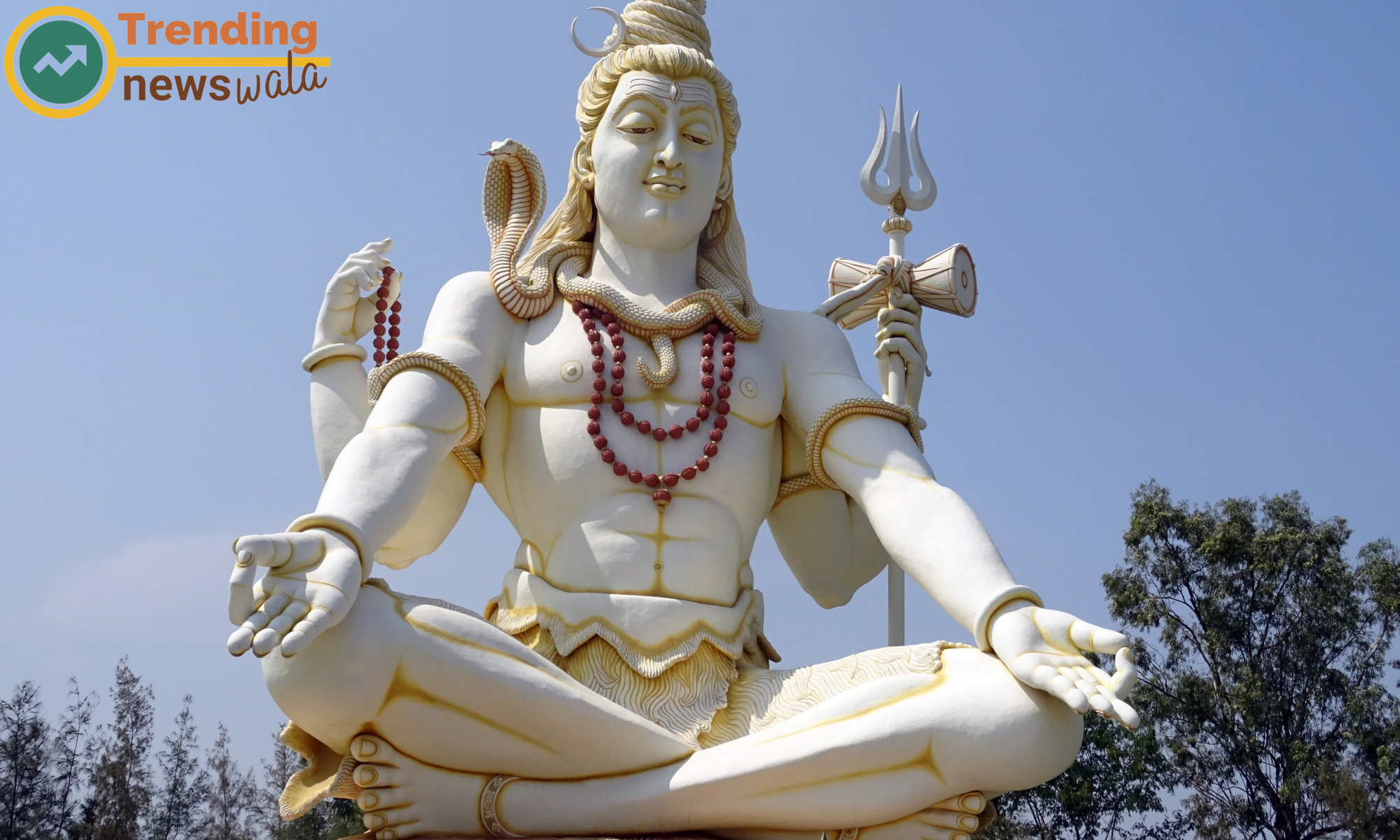
The Drum (Damru)
The damru, also known as the damaru, is a small, two-headed drum associated with Lord Shiva in Hindu mythology. The damru holds symbolic significance and is often depicted in the hands of Lord Shiva in various forms of iconography. This unique drum carries spiritual and cosmic connotations, representing creation, rhythm, and the primal sound of the universe.
Here are more details about the symbolism and significance of the damru in the context of Lord Shiva:
Creation and Rhythm: The damru is considered a symbol of creation and rhythm. According to Hindu mythology, the beats of the damru played by Lord Shiva are said to create the cosmic sound, known as Nada Brahma, which resonates throughout the universe. This sound represents the divine energy that brings forth creation.
Primal Sound of the Universe: The rhythmic beats of the damru are believed to be the source of all languages and the primordial sound from which the universe emanates. The continuous, rhythmic vibration symbolizes the cyclical nature of creation, preservation, and dissolution.
Auspiciousness and Blessings: The damru is considered an auspicious and sacred instrument. Its presence in the hands of Lord Shiva is believed to bring blessings and positive energy. Devotees often associate the sound of the damru with divine blessings and spiritual upliftment.
Yoga and Meditation: The sound of the damru is also associated with yogic practices and meditation. It is believed that the beats of the damru, when played with a specific rhythm, can induce a meditative state and align the practitioner with the cosmic vibrations.
Dance of Nataraja: In the cosmic dance form of Lord Shiva known as Nataraja, the damru is often depicted in one of his hands. The rhythmic beats of the damru during the cosmic dance symbolize the cosmic cycles of creation, preservation, and destruction.
Opposites and Unity: The two-headed nature of the damru, with one head larger than the other, represents the dualities and polarities present in the universe. It also signifies the unity of opposites, suggesting that all dualities ultimately find harmony in the cosmic dance of Lord Shiva.
Trikaala Darshana: The damru is sometimes associated with the concept of Trikaala Darshana, representing the three aspects of time: past, present, and future. The beats of the damru are believed to resonate across these temporal dimensions.
Shiva as Adiyogi: In the aspect of Lord Shiva as Adiyogi (the first yogi), the damru symbolizes the primal sound of Aum (Om), the sacred syllable that encompasses the essence of the universe. The beats of the damru are considered the cosmic vibration of Aum.
Protection from Evils: The sound of the damru is believed to have the power to ward off negative energies and protect devotees from malevolent forces. It is considered a divine instrument that brings spiritual protection.
In summary, the damru is a potent symbol associated with Lord Shiva, representing creation, rhythm, and the cosmic sound that underlies the universe. The rhythmic beats of the damru hold deep spiritual significance, connecting devotees with the divine energy and the eternal dance of the cosmos.
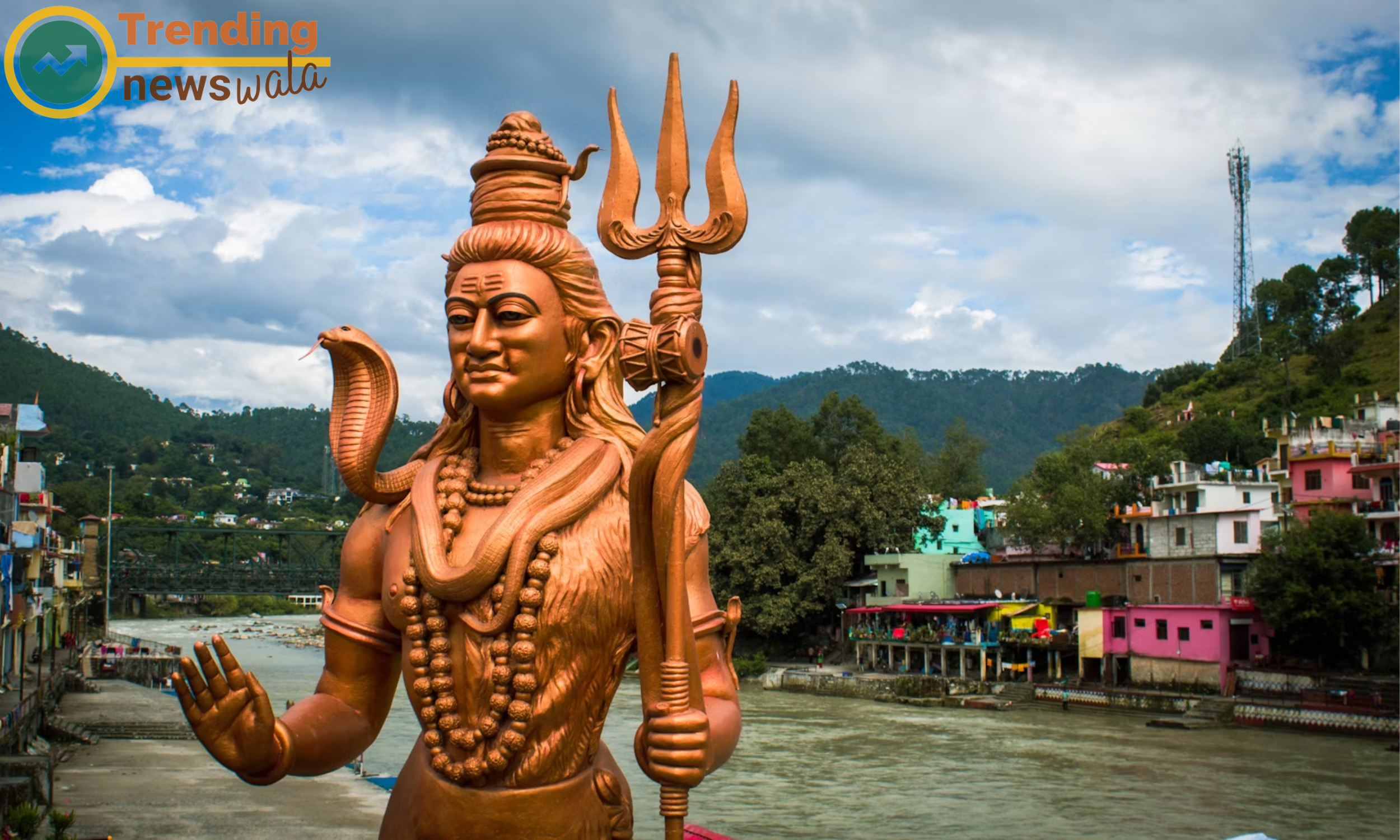
The Trident (Trishul)
The trident, known as the Trishul, is a prominent and powerful symbol associated with Lord Shiva in Hinduism. The Trishul holds deep spiritual, symbolic, and cosmic significance, representing various aspects of the divine and the cosmic order. It is one of the principal weapons of Lord Shiva and is often depicted in his hands in various forms of iconography.
Here are more details about the symbolism and significance of the Trishul in the context of Lord Shiva:
Symbol of Divine Power: The Trishul is a symbol of divine power and control. It represents the supremacy of Lord Shiva as the cosmic authority and the destroyer of ignorance and evil forces.
Trinity of Forces: The Trishul symbolizes the trinity of forces - creation (Brahma), preservation (Vishnu), and destruction (Shiva). Lord Shiva, being the deity associated with destruction, wields the Trishul as a tool to maintain cosmic balance.
Control Over the Three Gunas: The three prongs of the Trishul are believed to represent the three fundamental qualities of nature (Gunas) - Sattva (goodness), Rajas (passion), and Tamas (ignorance). Lord Shiva, by holding the Trishul, signifies his mastery over these primal forces that govern the universe.
Cosmic Symbolism: The Trishul is often interpreted as a representation of the three dimensions of existence - the physical, mental, and spiritual realms. It symbolizes Lord Shiva's authority over all aspects of existence.
Destruction of Ego: The central prong of the Trishul is believed to represent the destruction of ego (ahankara). Lord Shiva, as the destroyer, uses the Trishul to pierce through the illusions of ego and lead devotees towards self-realization.
Shiva as the Yogi: In the aspect of Lord Shiva as the Adiyogi (the first yogi), the Trishul is a representation of the three fundamental aspects of yogic practices - asana (posture), pranayama (breath control), and dhyana (meditation).
Control Over Time: The Trishul is also associated with Lord Shiva's control over time (Triloka Natha), representing past, present, and future. It signifies his transcendence beyond the limitations of time and his role as the eternal force in the cosmos.
Protection and Warding off Evil: Devotees believe that the Trishul serves as a powerful weapon to protect against negative forces and evil influences. The symbolism of the three prongs is thought to create a protective shield around the devotee.
Symbol of Asceticism: The Trishul is often associated with the ascetic lifestyle of Lord Shiva. It represents the renunciation of worldly attachments and the detachment from the cycle of birth and death.
Cosmic Dance (Tandava): In the cosmic dance of Lord Shiva known as Tandava, the Trishul is an essential element. The rhythmic movements with the Trishul in hand symbolize the cosmic cycles of creation, preservation, and destruction.
In summary, the Trishul is a potent and multifaceted symbol associated with Lord Shiva, embodying cosmic power, destruction of ego, mastery over the three gunas, and the eternal dance of the cosmos. It stands as a divine weapon that reflects the profound philosophy and symbolism embedded in Hindu mythology.
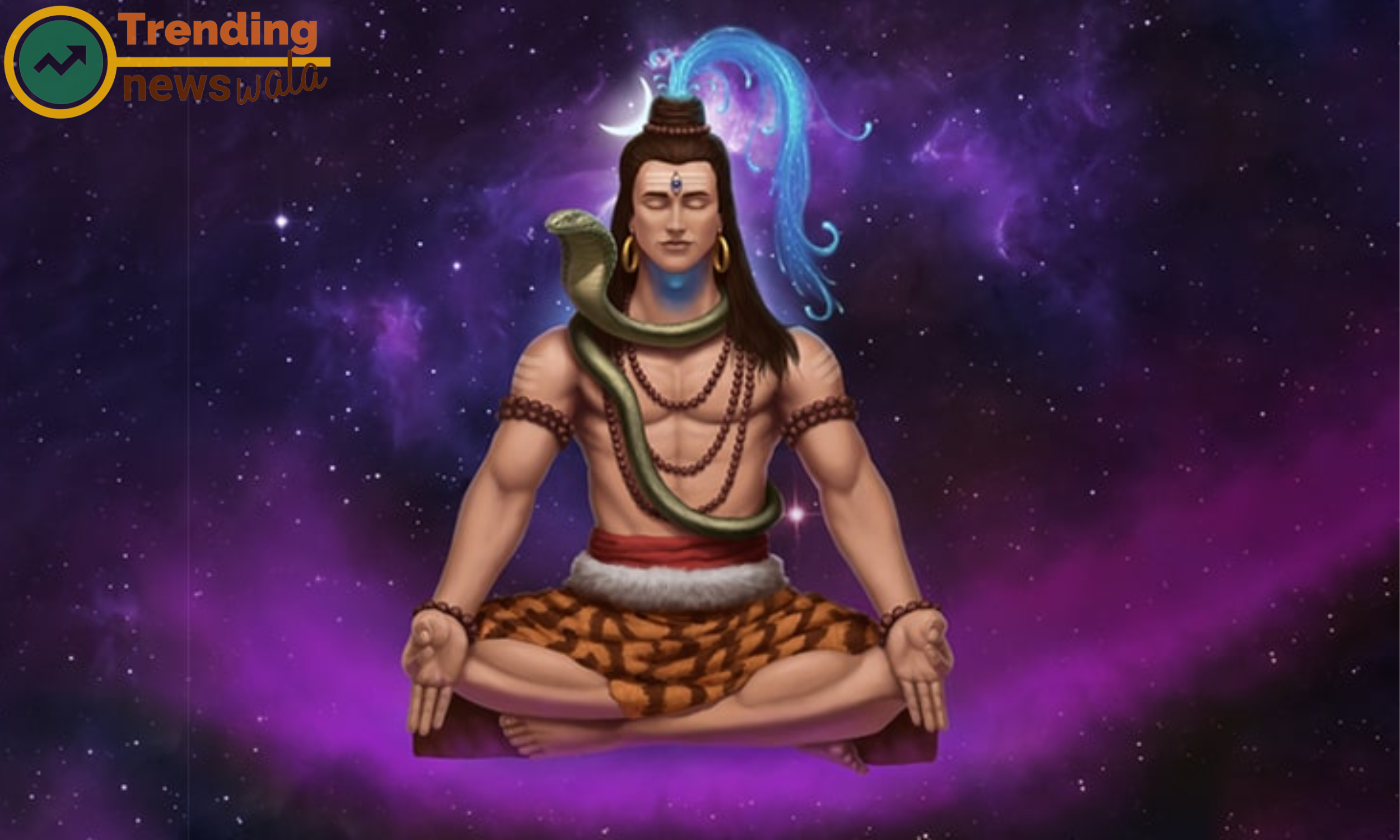
Tiger Skin (Vibhuti)
I believe there might be a confusion in your question. The tiger skin and vibhuti are two separate elements associated with Lord Shiva in Hindu mythology. Let me provide details on both:
Tiger Skin (Vibhuti): The tiger skin is often depicted as a seat or a mat for Lord Shiva. It symbolizes his role as a yogi and ascetic who is in control of his primal instincts. The choice of tiger skin as a seat signifies Lord Shiva's mastery over the animalistic tendencies and his ability to transcend the material world. It is also a representation of his fearlessness and the power to overcome challenges.
Vibhuti: Vibhuti refers to the sacred ash that Lord Shiva is often depicted wearing on his forehead, body, and arms. The word "Vibhuti" translates to "glorious" or "divine power." Vibhuti holds significant symbolism and is typically made by burning sacred substances, such as dried cow dung, milk, ghee, and various herbs, during religious rituals.
Significance of Vibhuti:
Ashes as Symbol of Transience: Vibhuti represents the transient nature of life and the inevitable reality of death. It serves as a reminder that all material forms will eventually turn to ash.
Renunciation and Detachment: Lord Shiva, adorned with Vibhuti, signifies his renunciation of worldly attachments and his detachment from material desires. It represents the ash from the cremation ground, emphasizing the ephemeral nature of life.
Third Eye Activation: The application of Vibhuti on the forehead, especially in the form of three horizontal lines, is associated with the activation of the third eye. It symbolizes heightened perception, knowledge, and spiritual insight beyond ordinary vision.
Protection and Spiritual Purity: Devotees often apply Vibhuti as a protective mark on their bodies during worship. It is believed to purify the body, mind, and soul, and wearing it is considered an act of devotion and surrender to the divine.
While both the tiger skin and Vibhuti are associated with Lord Shiva, they serve different symbolic purposes. The tiger skin emphasizes his yogic and ascetic qualities, showcasing mastery over primal instincts, while Vibhuti highlights spiritual purity, detachment, and the transient nature of existence.
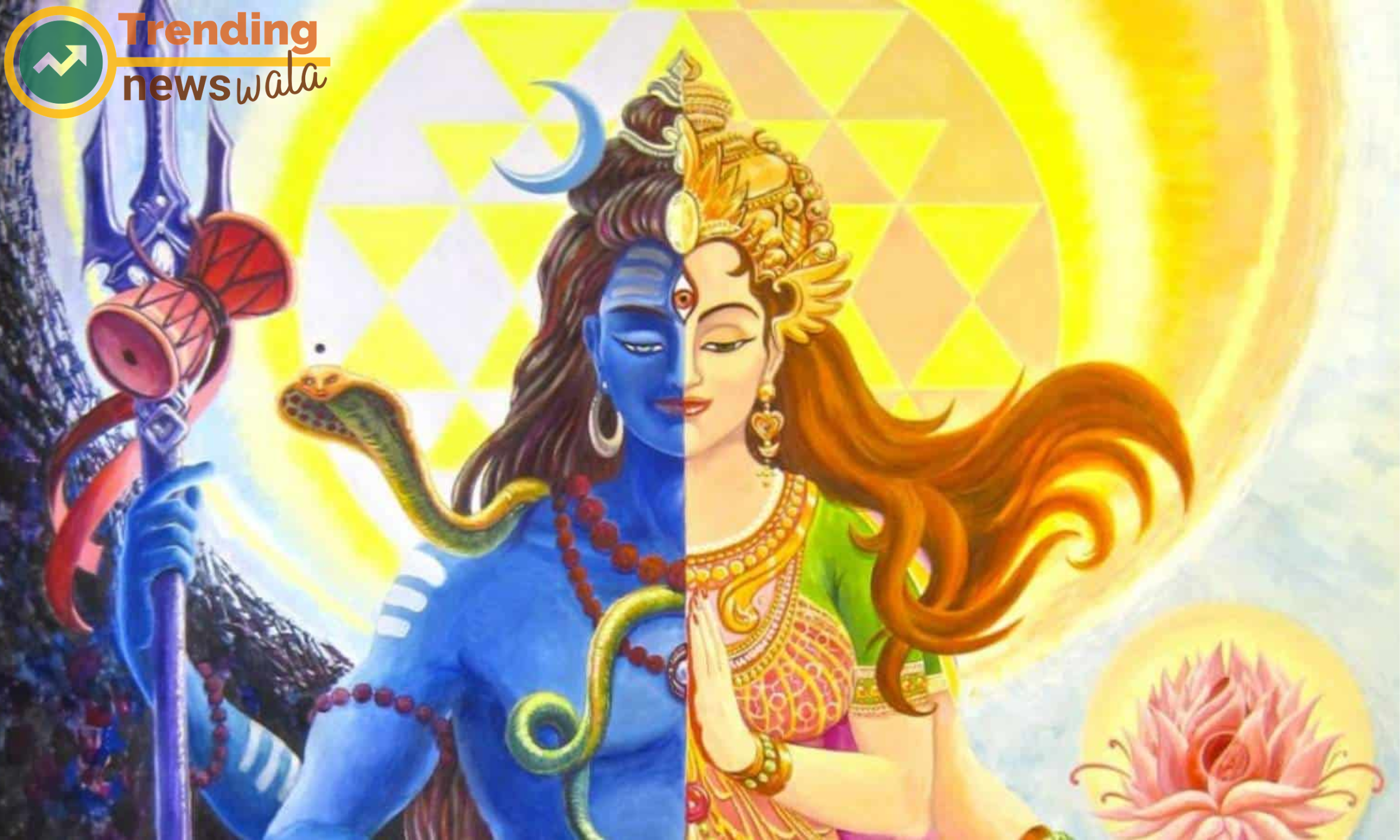
Ardhanarishvara (Half-Male, Half-Female)
Ardhanarishvara is a unique and captivating representation of Lord Shiva in Hindu mythology, where the deity is depicted as half-male and half-female. This composite form symbolizes the inseparable unity of masculine and feminine energies in the divine. Here are more details about Ardhanarishvara:
Name and Meaning: The term "Ardhanarishvara" is derived from the combination of three Sanskrit words: "Ardha" (half), "Nari" (woman), and "Ishvara" (Lord). Hence, Ardhanarishvara is often translated as "Lord who is half-woman."
Unity of Shiva and Shakti: Ardhanarishvara represents the harmonious union of Lord Shiva, the male principle (Purusha), and Goddess Parvati or Shakti, the female principle (Prakriti). It signifies the inseparability of the cosmic energies responsible for creation, preservation, and destruction.
Symbol of Wholeness: The form of Ardhanarishvara illustrates that both male and female aspects are essential for the completeness and wholeness of the divine. It emphasizes the concept that the ultimate reality encompasses both masculine and feminine energies.
Iconography: Ardhanarishvara is typically depicted with the right half being Shiva and the left half being Parvati. Shiva's half is often adorned with matted hair, a serpent around the neck, and a crescent moon, while Parvati's half may have feminine features, ornaments, and clothing.
The male and female halves are conjoined at the center, often marked by a vertical line representing the axis of creation and the cosmic balance.
Symbolism of Ardhanarishvara:
Unity of Opposites: Ardhanarishvara embodies the philosophical concept of Advaita (non-dualism), emphasizing the unity of opposites. It conveys that the dualities in the world are illusory, and the ultimate reality transcends distinctions.
Balance in Creation: The form signifies the balance of masculine and feminine energies in the cosmic dance of creation. It suggests that creation unfolds through the harmonious interplay of Shiva and Shakti.
Androgynous Nature of the Divine: Ardhanarishvara challenges conventional gender norms and highlights the androgynous nature of the divine. It transcends the limitations of gender, presenting a divine being that encompasses both genders.
Mythological Context: In some Hindu myths, Ardhanarishvara is said to have appeared when Lord Shiva merged with his consort Parvati. The form is associated with a sense of divine androgyny that transcends the physical distinctions between male and female.
Worship and Devotion: Ardhanarishvara is revered by devotees as a symbol of balance, equality, and the divine unity of Shiva and Shakti. Worship of Ardhanarishvara is considered auspicious for seeking marital harmony, understanding, and balance in relationships.
Cultural Influence: The Ardhanarishvara concept has influenced various art forms, literature, and cultural expressions in Hindu traditions. It serves as a powerful symbol that challenges binary thinking and promotes a holistic understanding of the divine.
In summary, Ardhanarishvara is a profound representation in Hindu iconography that transcends gender distinctions and underscores the unity of masculine and feminine energies within the divine. It invites contemplation on the interconnectedness and balance of cosmic forces in the eternal dance of creation.
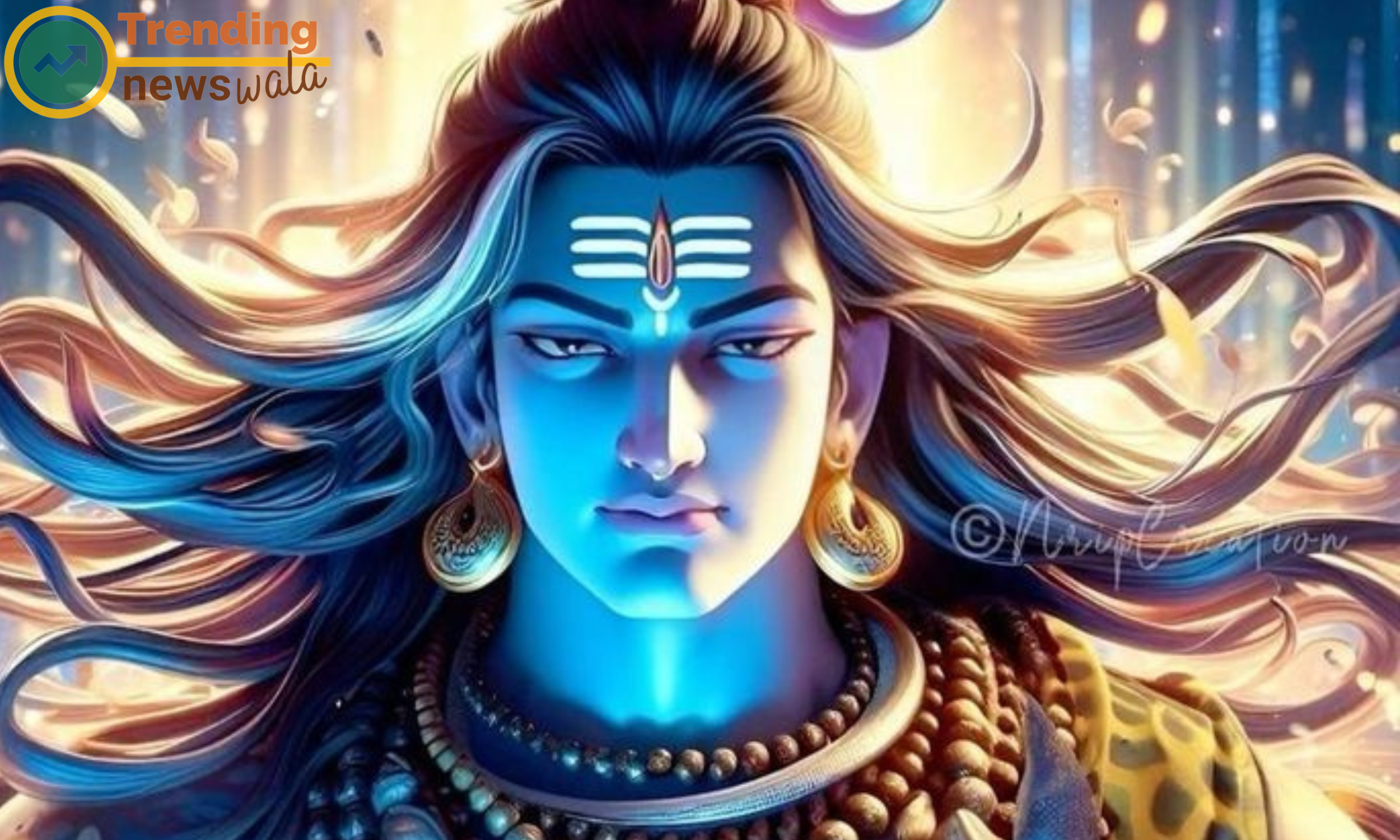
Attributes of Lord Shankar
In the vast tapestry of Hindu mythology, Lord Shankar, also known as Lord Shiva, stands as a towering and multifaceted deity. Revered as the supreme ascetic, cosmic dancer, and the destroyer of ignorance, Lord Shankar holds a unique place in the hearts of millions of devotees. This article explores the rich attributes, symbolism, and the profound philosophy associated with the divine persona of Lord Shankar.
Lord Shankar, with his multifaceted attributes, invites devotees to contemplate the intricate dance of the cosmos and the eternal rhythm of life. As the supreme ascetic, cosmic dancer, and destroyer of illusions, Lord Shankar remains an iconic figure embodying the philosophical essence of Hinduism. His worship transcends religious boundaries, uniting millions in awe and reverence for the divine cosmic force that is Lord Shankar.
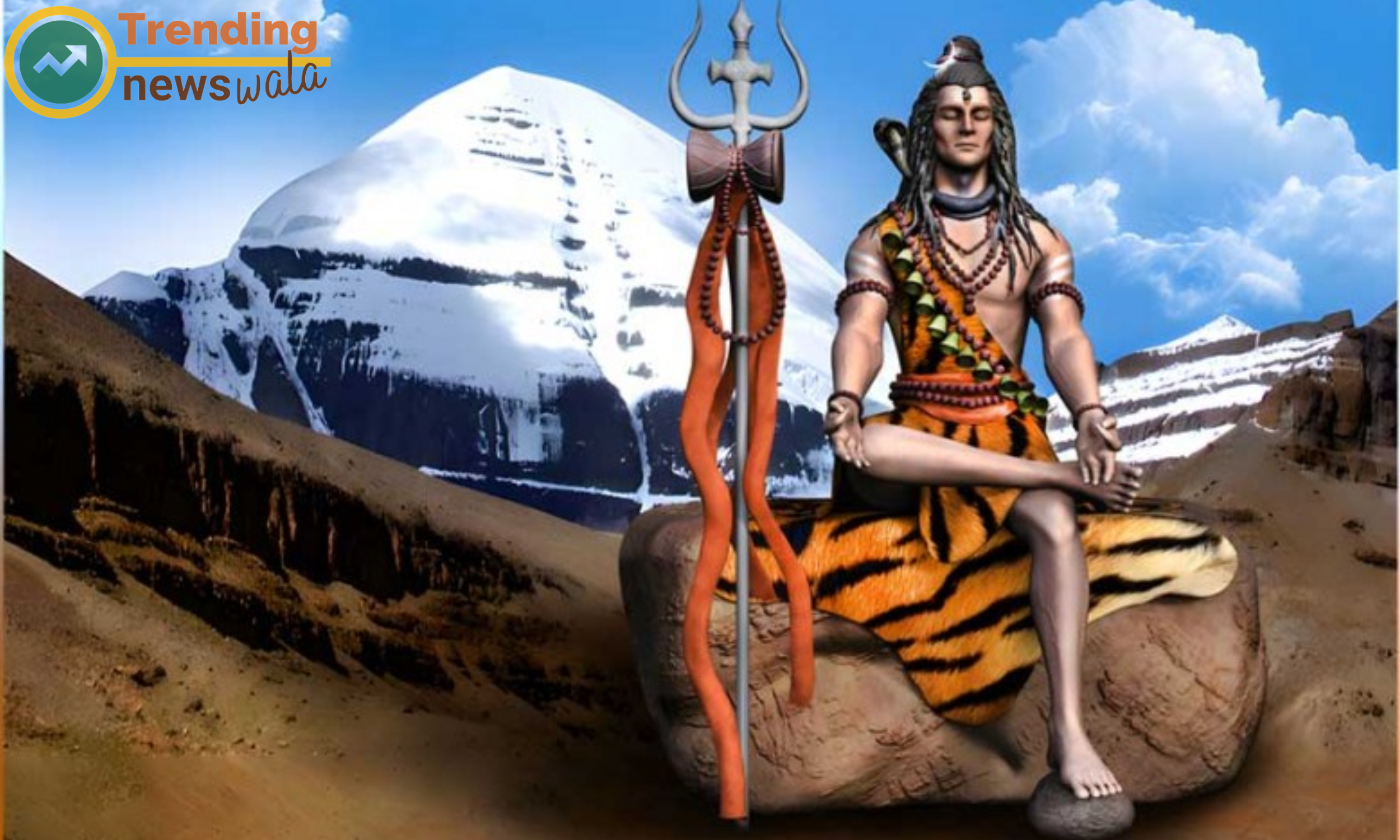
Mountains as His Abode (Kailash)
Mount Kailash holds a special significance in Hinduism, as it is believed to be the divine abode of Lord Shiva, also known as Lord Shankar. Here are more details about Mount Kailash as Lord Shankar's abode:
Sacredness of Mount Kailash: Mount Kailash is considered one of the most sacred mountains in Hinduism and various other religions, including Buddhism, Jainism, and Bon. It is situated in the remote western part of Tibet, in the Kailash Range of the Himalayas.
Geographical Location: Mount Kailash stands tall at an elevation of 6,638 meters (21,778 feet) above sea level. It is part of the Transhimalaya range and is near the source of some of the major rivers in Asia, including the Indus River, the Sutlej River, and the Brahmaputra River.
Association with Lord Shiva: In Hindu mythology, Mount Kailash is believed to be the residence of Lord Shiva. It is considered the heavenly abode where Lord Shankar resides in deep meditation and contemplation. Devotees regard this mountain as a sacred site where the divine and the earthly realms meet.
Symbol of Transcendence: Mount Kailash is often seen as a symbol of transcendence and the pursuit of spiritual heights. The mountain's towering presence and challenging terrain symbolize the ascetic lifestyle embraced by Lord Shankar, reinforcing the idea of rising above worldly attachments and reaching spiritual heights.
Mythological Significance: In Hindu mythology, it is believed that Lord Shiva chose Mount Kailash as his abode to engage in deep meditation and penance. The mountain is associated with various myths and legends, including the churning of the cosmic ocean (Samudra Manthan), where Lord Shankar played a crucial role.
Pilgrimage Destination: Mount Kailash is a significant pilgrimage destination for Hindus, who undertake the arduous Kailash Mansarovar Yatra to seek the blessings of Lord Shiva. The circumambulation (parikrama) of Mount Kailash is considered a sacred ritual, symbolizing the devotion and determination of the pilgrims.
Jain and Buddhist Connections: Mount Kailash is also revered by Jains as the site where Rishabhadeva, the first Tirthankara, attained spiritual enlightenment. In Buddhism, Mount Kailash is associated with Tantric practices, and the nearby Lake Mansarovar is considered sacred.
Unique Geographical Features: Mount Kailash is known for its unique geographical features, including its distinct four-faced shape and the absence of any recorded attempts to summit the peak. The mountain's spiritual significance has led to a consensus among pilgrims and locals to avoid climbing it.
Lake Mansarovar: Lake Mansarovar, located near Mount Kailash, is considered one of the holiest lakes in Hinduism. Pilgrims often take a dip in its sacred waters as part of their spiritual journey.
Global Cultural Influence: Mount Kailash's cultural and spiritual importance extends beyond the Indian subcontinent, capturing the imaginations of people worldwide. It has become a symbol of the pursuit of higher truths and the quest for spiritual enlightenment.
Mount Kailash is more than just a geographical entity; it is a symbol of transcendence, spirituality, and the divine abode of Lord Shankar. The mountain's mythological significance and its role as a pilgrimage destination underscore its enduring impact on the religious and cultural fabric of the region.
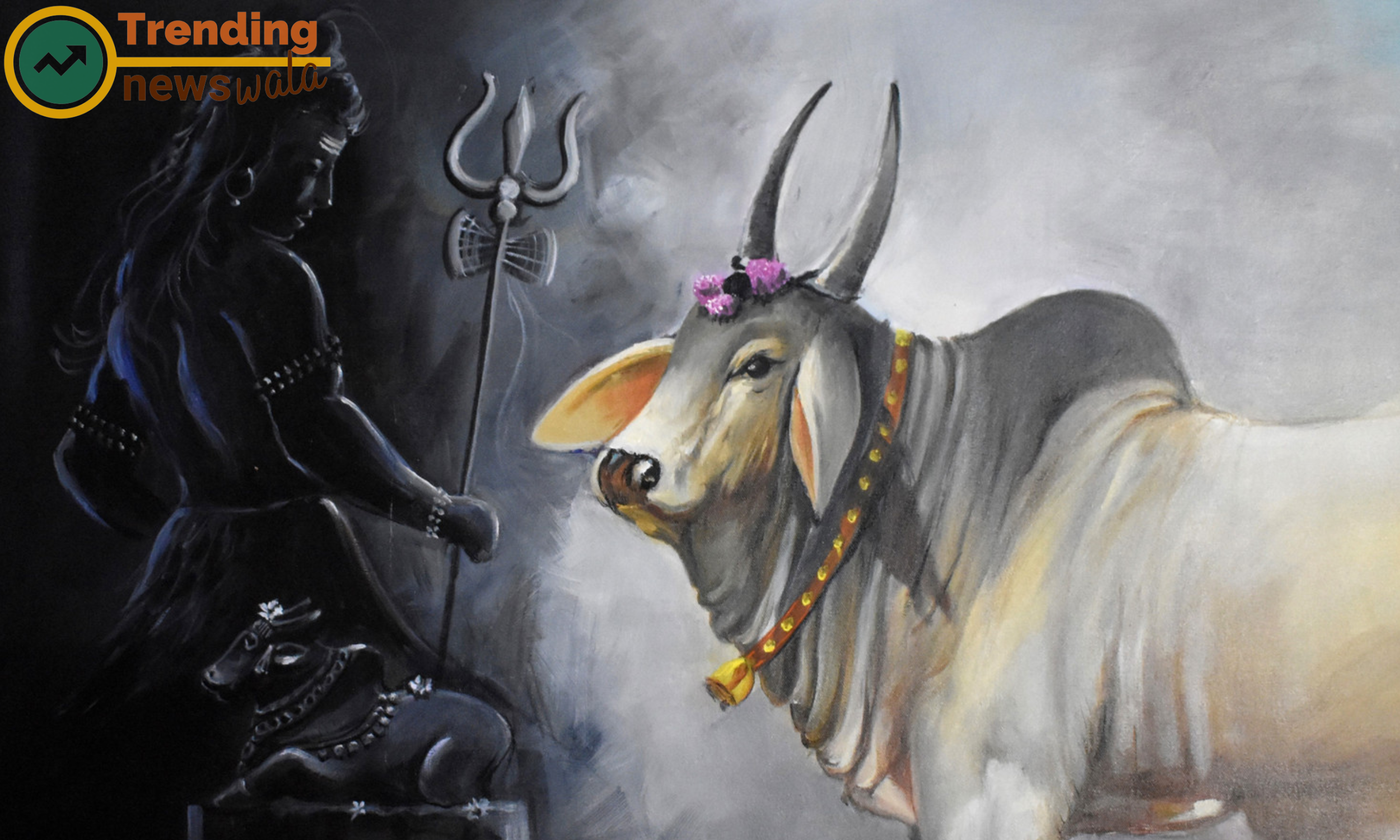
Bull (Nandi) as His Vehicle
Nandi, the sacred bull, serves as the divine vehicle and devoted companion of Lord Shiva, also known as Lord Shankar. This association with Nandi holds deep symbolic and spiritual significance in Hindu mythology. Here are more details about Nandi as Lord Shankar's vehicle:
Symbol of Strength and Virility: Nandi is often depicted as a powerful and sturdy bull, symbolizing strength, virility, and dharma (righteousness). The bull's robust and muscular form signifies Lord Shankar's mastery over the primal and untamed forces of nature.
Dharma and Devotion: Nandi is considered a symbol of dharma, embodying principles of righteousness and duty. The bull's unwavering loyalty to Lord Shankar reflects the ideal of devotion and selfless service.
Gatekeeper of Kailash: According to Hindu mythology, Nandi serves as the gatekeeper of Mount Kailash, the abode of Lord Shankar. He guards the entrance to Lord Shankar's divine presence and grants access to those with pure intentions.
Companion in Meditation: In various depictions, Nandi is shown seated near Lord Shankar in a meditative posture. This symbolizes the harmonious companionship between the divine and the animal, emphasizing the transcendence of worldly distinctions.
Vehicle for Divine Presence: Nandi is often associated with the concept of vahana (vehicle) in Hindu mythology. The bull carries Lord Shankar, facilitating his divine presence and enabling his interactions with devotees and the celestial realms.
Symbol of Fertility: The bull is a traditional symbol of fertility in Hinduism. Nandi's association with Lord Shankar may be seen as a representation of the divine couple's role in the cosmic cycle of creation and preservation.
Cultural Significance: Temples dedicated to Lord Shankar often feature a sculpture or idol of Nandi placed at the entrance or in the sanctum sanctorum. Devotees pay homage to Nandi as a way of seeking Lord Shankar's blessings.
Nandi and Shakti Worship: Nandi is also associated with Shakti worship, particularly in the form of the divine mother Parvati. In some traditions, Nandi is considered a symbol of fertility and is worshipped to seek blessings for agricultural prosperity.
Stories and Legends: There are several stories and legends that highlight the close relationship between Lord Shankar and Nandi. These tales often emphasize Nandi's unwavering devotion and his role in assisting Lord Shankar during various cosmic events.
Nandi Puja and Festivals: Devotees perform special puja (worship) dedicated to Nandi, seeking blessings for strength, fertility, and spiritual progress. Some regions also celebrate festivals like "Nandi Puja" to honor the sacred bull.
In essence, Nandi symbolizes strength, loyalty, and the embodiment of righteous living. His association with Lord Shankar goes beyond being a mere vehicle; it represents the inseparable bond between the divine and the earthly, emphasizing the values of devotion, service, and righteous conduct in Hindu spirituality.
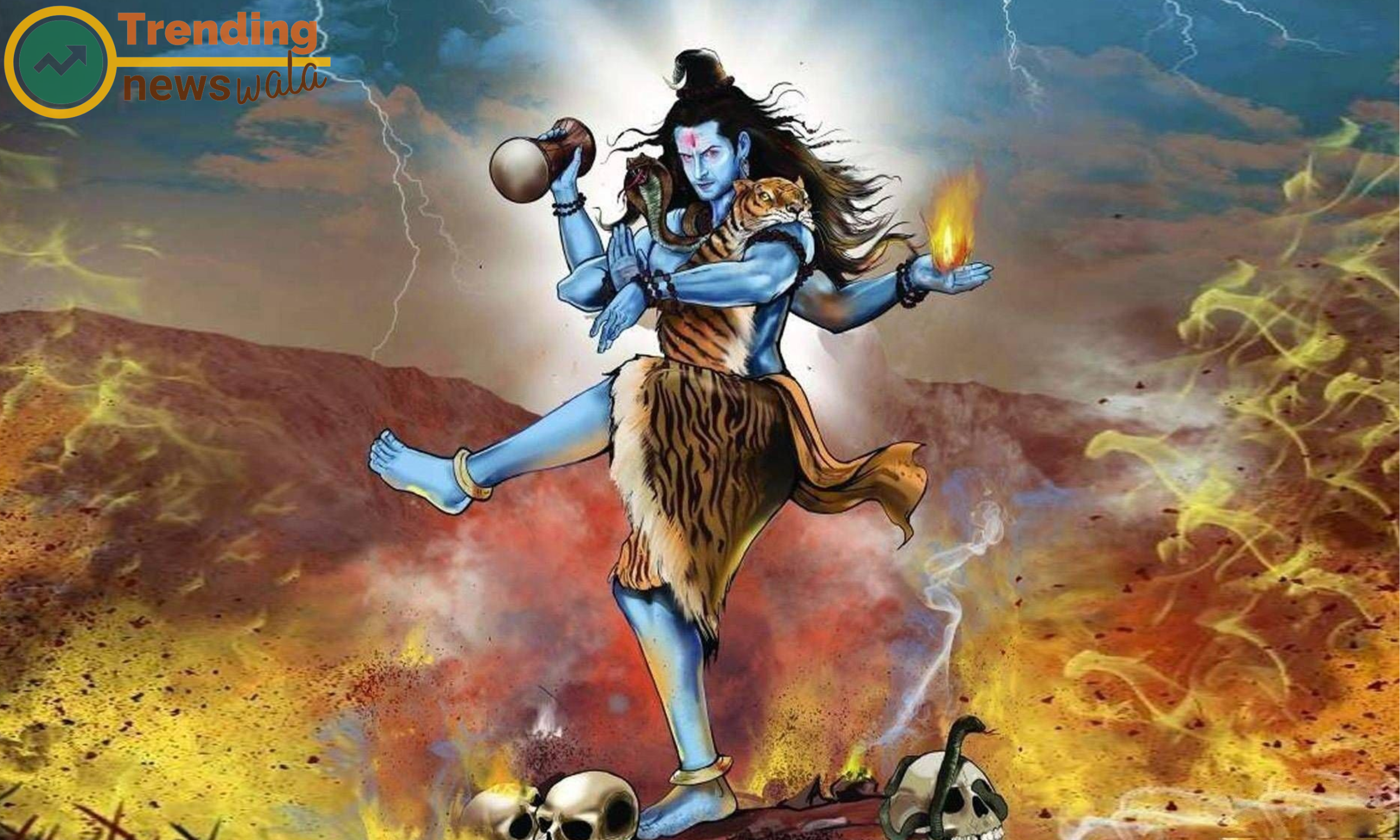
Cosmic Dance (Tandava)
The Cosmic Dance of Lord Shiva, known as Tandava, is a divine and dynamic form of dance that symbolizes the rhythmic cycles of creation, preservation, and destruction in the universe. Tandava holds deep spiritual, philosophical, and cosmic significance in Hindu mythology. Here are more details about the Cosmic Dance of Lord Shiva:
Tandava and Nataraja: Tandava is often associated with Nataraja, the Lord of Dance. Nataraja is a significant aspect of Lord Shiva's persona, showcasing his simultaneous roles as the creator, preserver, and destroyer of the cosmic order. The term "Nataraja" translates to "King of Dance."
Two Forms of Tandava: Tandava is classified into two main forms: Ananda Tandava and Rudra Tandava. Ananda Tandava is the gentle, blissful dance symbolizing the cosmic cycles of creation and preservation. Rudra Tandava, on the other hand, is a more fierce and vigorous dance representing the destructive aspects of the universe.
Symbolism of the Dance Poses: In the Nataraja form, Lord Shiva is often depicted with multiple arms and legs, engaged in various dance poses. The dance postures symbolize cosmic activities such as creation, protection, destruction, illusion, and salvation.
Apocalyptic Destruction: The Rudra Tandava aspect of the dance is associated with the apocalyptic destruction of the universe. Lord Shiva's vigorous dance is believed to dissolve the existing cosmic order, paving the way for a new cycle of creation and rebirth.
Symbol of Cosmic Energy: Tandava represents the cosmic energy that flows through all living and non-living entities in the universe. Lord Shiva's dance is believed to energize and activate the vital forces that sustain life.
Dance as an Art Form: Tandava is considered the source of all dance forms and arts. The rhythms and patterns of Lord Shiva's cosmic dance are believed to have influenced the various dance styles performed by both humans and celestial beings.
Rhythmic Order of the Universe: The beats and rhythms of Tandava symbolize the rhythmic order (Rita) of the universe. The dance is believed to be in harmony with the cosmic cycles and the eternal pulse of creation.
Destruction of Ego: Tandava is not only a cosmic dance but also a spiritual practice. Lord Shiva's dance signifies the destruction of individual ego (ahankara) and the release from the cycle of birth and death.
Tamasha and Lasya: Tandava includes two other aspects called "Tamasha" and "Lasya." Tamasha is the vigorous and powerful dance, while Lasya is the graceful and gentle dance. Together, they represent the dual nature of Lord Shiva—both fierce and compassionate.
Cultural and Artistic Influence: The imagery of Nataraja and the Tandava dance has inspired countless artists, poets, and philosophers across cultures. The cosmic dance is a source of inspiration for the exploration of the metaphysical aspects of existence.
In essence, Tandava is a powerful and profound concept in Hinduism, representing the eternal dance of the cosmos and the cyclical nature of creation, preservation, and destruction. It invites contemplation on the cosmic rhythms that govern the universe and the divine order maintained by Lord Shiva.
Writer and content creator
Log in to share your thoughts and engage with other readers.